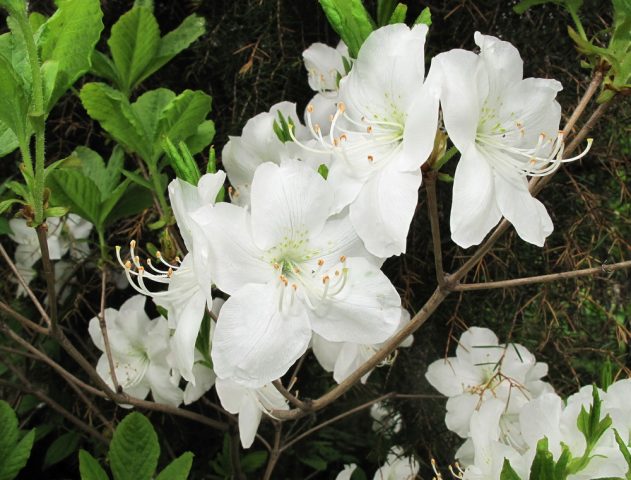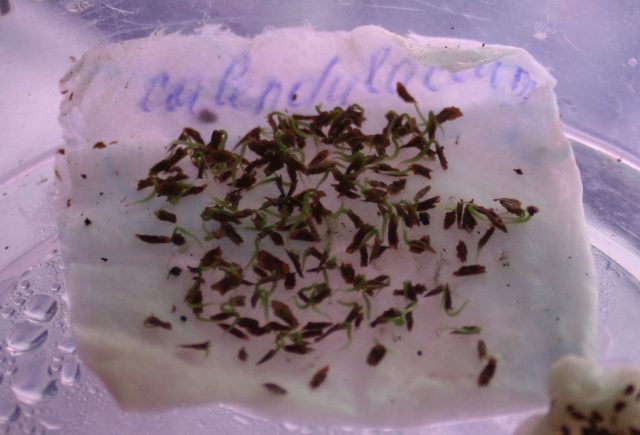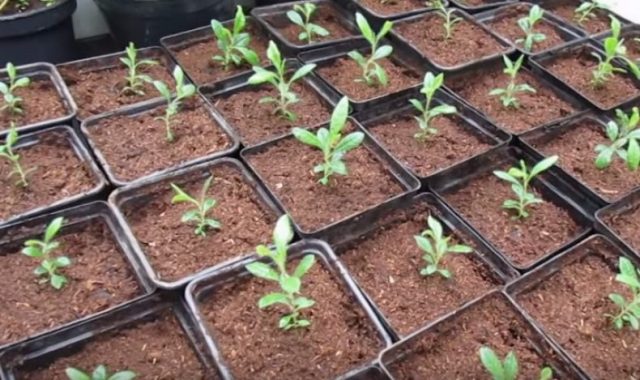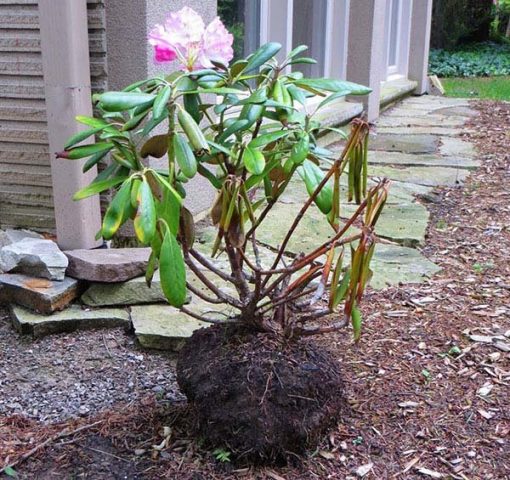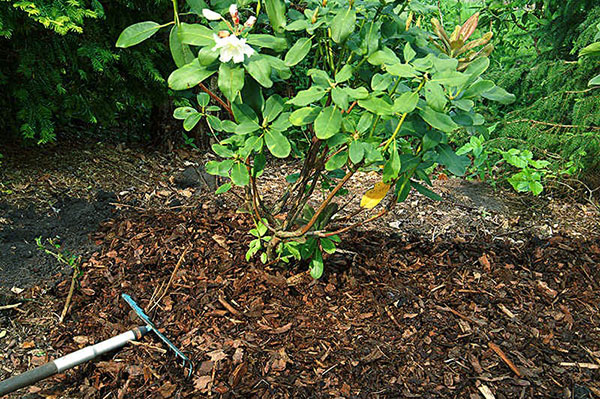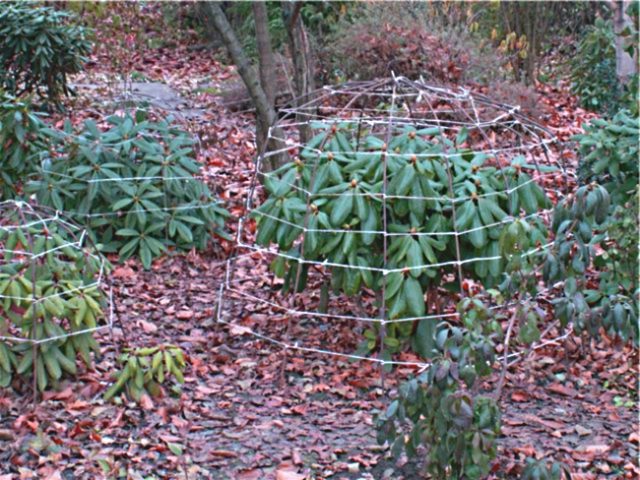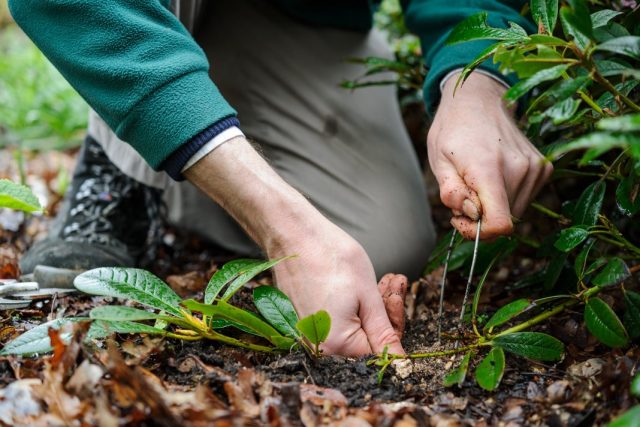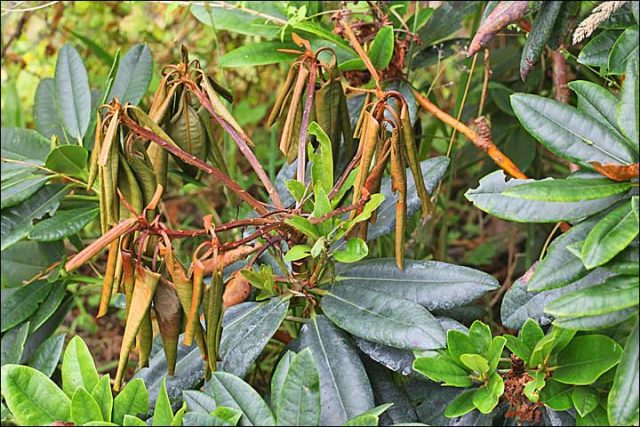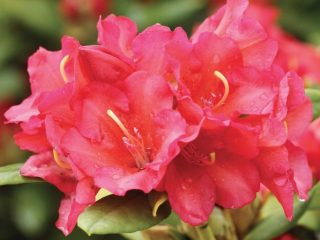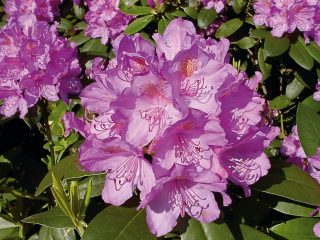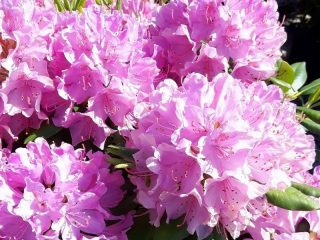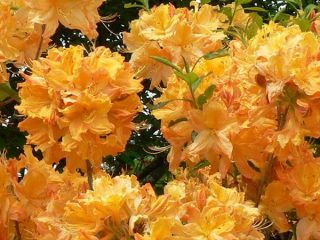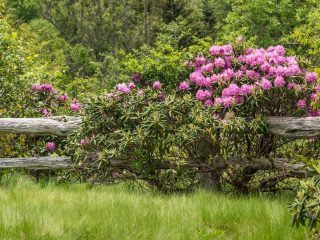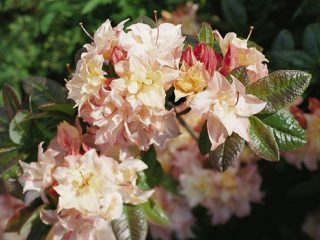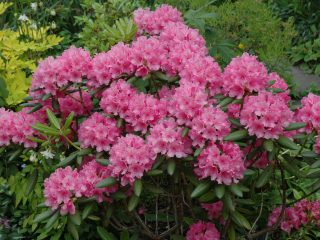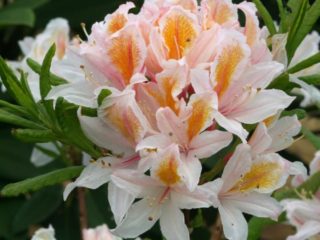Content
- 1 Description of Rhododendron Schlippenbach
- 2 Winter hardiness of Rhododendron Schlippenbach
- 3 Medicinal properties of Rhododendron Schlippenbach
- 4 How to grow Schlippenbach rhododendron from seeds
- 5 Planting and caring for Schlippenbach rhododendron
- 6 Reproduction of Rhododendron Schlippenbach
- 7 Diseases and pests
- 8 Conclusion
Many wild shrubs have been cultivated and become permanent inhabitants of country gardens and city alleys. Rhododendron Schlippenbach is one such plant. In the wild, the culture grows in Japan, China, and the Far East. Alpine rose, as Schlippenbach rhododendron is also called, blooms magnificently and brightly, but despite this, it has not become widespread in Russia.
Description of Rhododendron Schlippenbach
The plant belongs to the rhododendron genus, heather family. This is a deciduous shrub that can be found in nature in the south of Primorsky Krai, Korea, and the northern and eastern parts of China. This plant is a long-liver and can live up to 40 years or more. In Russia, Schlippenbach rhododendron is listed in the Red Book, since the number of wild plants is rapidly declining.
In nature, Schlippenbach rhododendron grows on rocky hills, hills, and at the foot of mountains. The height of the wild bush reaches 4 m, the length of the cultivated plant does not exceed 2 m. The leaves of Schlippenbach rhododendron are thin, narrow, grooved, wavy at the edges, have a rounded shape at the end, collected in brushes of 5 pieces. Their color is light green in spring, emerald in summer, and red, orange, and golden in autumn. The branches of Schlippenbach rhododendron are almost bare, with small leaves at the tips.
The flowers are large (their diameter often exceeds 8 cm) collected in inflorescences of 4 to 6 copies each. The buds are soft pink, with small purple dots visible on the petals closer to the center. In the center of the flower there are long stamens, curved at the ends, covered with bright yellow pollen. The aroma of the buds of this particular bush species is spicy and delicate. It is often planted in the garden due to this quality. Schlippenbach rhododendron over 6 years old begins to bloom in April-May, depending on the climate. White Schlippenbach rhododendron is sometimes found in nature.
After flowering, in place of the buds, fruits are formed in the form of an oblong box containing seeds. They propagate the plant more often and more efficiently than other methods.
Winter hardiness of Rhododendron Schlippenbach
The crop tolerates winter frosts well. A decrease in air temperature to - 26 ᵒC and soil temperature to - 9 ᵒC is not scary for it. In snowy winters, Schlippenbach rhododendron is able to preserve its roots and shoots even at lower temperatures.Due to this frost resistance, Schlippenbach rhododendron is recommended for cultivation in the northern and central parts of Russia.
Medicinal properties of Rhododendron Schlippenbach
This type of rhododendron contains a large amount of vitamin C, organic substances, and essential oil. Tea made from the leaves of the bush can relieve hacking coughs and relieve asthma attacks. The plant will also help with high blood pressure, joint pain, and chills. A warm drink from the flowers of the plant will help relieve headaches and ease sore throats.
At the same time, preparations from Schlippenbach rhododendron are toxic to streptococci, pathogenic microbes of intestinal microflora, and staphylococci.
Raw materials from all types of rhododendrons should be used with caution.
How to grow Schlippenbach rhododendron from seeds
If you do not have special skills in propagating ornamental crops, you can grow Schlippenbach seedlings from seeds at home.
The seeds of the bush are very small, but they have a strong peel, so they are soaked before planting in the ground. Take gauze in several folds, moisten it with warm water, and lay the seeds on top in one layer. They are covered with film on top and placed in a warm, bright place for 3-4 days.
At this time, the planting containers are filled with earth. Take soil for the needles, mix it in equal parts with peat, sand, and humus.The soil mixture must be ground well so that the seeds germinate easily and evenly. To avoid infecting the seed with fungal diseases, the soil is watered with a strong solution of potassium permanganate.
Sowing algorithm:
- Shallow furrows are closed in the ground and seeds are placed in them at a distance of 1-2 cm from each other. The top of the seedlings is not sprinkled with soil.
- The planting container is covered with film or covered with transparent glass.
- The structure is placed in the light in a warm place (the air temperature should not fall below + 20 ᵒC).
If all the rules are followed and the seeds are of high quality, growing Schlippenbach rhododendron from seeds will be crowned with success after 2-4 weeks, when the first shoots appear.
After 1.5-2 months after planting, real leaves will appear on Schlippenbach seedlings. When there are a couple of them, the seedlings are transplanted into separate pots or plastic cups. Containers with plants are placed in a cool place for hardening. The air temperature in the room should not exceed + 15 ᵒС. Lighting should be 12 hours, if necessary, use special lamps. Schlippenbach seedlings are watered regularly. The soil should be slightly moist; stagnation of water should not be allowed.
When the temperature outside rises above + 5 ᵒС, the seedlings are taken outside for 15 minutes for rapid adaptation. Over time, the duration of air baths before transplanting into open ground increases to several hours.
In April, after the 15th, they begin planting Schlippenbach rhododendrons in open ground.By this time, the trunk of the small plant should become woody, and there should be at least 7 leaves on it.
Planting and caring for Schlippenbach rhododendron
The shrub grows poorly and does not bloom in the shade. Direct sunlight can also harm your Schlippenbach rhododendron. A place for it is chosen in partial shade, near other low-growing crops and fences. Schlippenbach's rhododendron does not like the proximity of fruit trees with a superficial root system. You cannot plant an alpine rose next to birch, maple, or willow.
Selection and preparation of a landing site
There should be hedges or plants around the Schlippenbach rhododendron, but not too close. They will protect the bush from drafts that are destructive to it. It is good to plant the Schlippenbach bush near a pond, it loves moisture. The soil chosen is acidic. A few weeks before planting, the soil is dug up and humus and peat are added. Immediately before planting, it is well moistened.
Seedling preparation
Before planting, the seedling is dipped in a container of warm water for about half an hour. After this time, the root is freed from the container in which it is located. It is advisable to preserve the earthen lump without damaging the roots. The plant is ready for planting.
Landing rules
Schlippenbach deciduous rhododendron is planted in the spring, in April. Compliance with planting rules ensures that the shrub will take root and grow quickly.
Landing algorithm:
- A hole is dug 2 times larger than the root system of the Schlippenbach rhododendron.
- A small layer of crushed stone is placed at the bottom of the hole, which will act as drainage.
- A soil mixture (soil, humus, sand, peat) is poured over the drainage layer. The components are taken in equal parts and the hole is filled by a third.
- The seedling is placed vertically in the hole, the root shoots are straightened, they cannot be broken off or cut off with a shovel.
- Fluffy soil is poured over the root and compacted.
Then the Schlippenbach bush is watered abundantly, the trunk circle is mulched with sawdust, bark, and pine needles.
Watering and fertilizing
This plant is moisture-loving; the soil under it should always be moist. In summer, Schlippenbach rhododendron is watered abundantly every other day. When normalizing the frequency of irrigation, they are guided by the abundance of precipitation in the warm season. If the summer is rainy, you can water Schlippenbach rhododendron less often. In the south, it is important to prevent the soil from drying out.
In spring and autumn, 1 watering per week is sufficient. Alpine Rose Schlippenbach responds well to soft water. You can water it with rainwater. It is also good to moisten the plant with a liquid containing lemon juice. Such watering is carried out no more than once a month.
In spring and summer, Schlippenbach rhododendron is fertilized 3 times. The first fertilizing is applied in April before the bush begins to flower. In summer, fertilizers are applied after the Schlippenbach rhododendron flowers have fallen. In autumn, the bush is fed no earlier than the beginning of October.
For fertilizing I use any organic fertilizers: humus, peat, cow manure (diluted with water 1:10) or mineral fertilizers prepared specifically for all types of rhododendrons.
It is not recommended to feed Schlippenbach rhododendron more than 3 times during the spring-summer period. This can harm its root system.For young seedlings up to 4 years old, use special fertilizers with a low concentration of substances.
Trimming
Schlippenbach rhododendron, or as it is also called the rose tree, is pruned immediately after flowering. It is not recommended to remove a large number of shoots or shorten them greatly. Young green branches should not be cut off; the plant may die. Remove old, dried, broken shoots. Subsequent sanitary pruning is carried out at the end of September or in October, when they are prepared for wintering.
Preparing for winter
At the end of October or November, young Schlippenbach shrubs no older than 2-3 years are covered. They are covered with spruce branches or wrapped with a special covering fabric. The tree trunk circle, especially the root collar, is sprinkled with a thick layer of sawdust (15-20 cm). The covering material is removed in the spring, after the snow has completely melted.
Mature Schlippenbach shrubs are not protected from the cold. Before frost sets in, mulch the soil around it and bend the branches toward the ground. In winter, after snow falls, you can cover the plant with it; this is the best heat-insulating agent for garden crops. If the place where the Schlippenbach rhododendron grows is windy, it is protected for the winter with branches or wire woven into a hut. The shoots of the crop are quite fragile and are susceptible to breaking off in strong winter winds.
Reproduction of Rhododendron Schlippenbach
The crop can be propagated by seeds, cuttings, and layering. Judging by the reviews of experienced plant growers, growing from seeds is considered an effective method of propagating Schlippenbach rhododendron. This method is described in detail above.
To obtain cuttings in the fall, after flowering has ended, strong, young shoots are cut from the bush. They are divided into several parts, approximately 15-20 cm each.One end of the cutting is soaked in the Kornevin solution for about an hour. Then, with the same end, the shoot is rooted in acidic soil. It is prepared in the same way as when planting seeds. Cover the cuttings with foil on top and place them in a dark, warm place. In a month it will take root. In spring, the seedling is planted in open ground.
Schlippenbach rhododendron is rooted by layering at the end of summer, after it has finished flowering. Take the shoot you like, bend it to the ground, attach it to the soil with a bracket in the middle, and sprinkle it with earth.
Once a week, water the branch at the attachment point. By September, the Schlippenbach rhododendron cuttings will have taken root. It is separated from the mother bush by cutting off the branch and carefully digging out the root. The young Schlippenbach plant is transplanted into a container with prepared acidic soil. In winter they are grown indoors. In the spring, at the end of April, the rose tree is transplanted into open ground.
Diseases and pests
The deciduous Schlippenbach shrub is resistant to diseases and pests. Rarely, it can become infected from neighboring deciduous or evergreen crops.
Infection with rhododendron mosaic can occur with any type of this crop. The virus is carried by insects. Rusty, small spots and green growths similar to calluses appear on the leaves. The crop slows down and the number of buds decreases. At the first signs of the disease, the affected parts of the plant are cut off and destroyed.
One of the fungal diseases dangerous to Schlippenbach rhododendron is tracheomycosis wilt. When damaged, the roots begin to rot, and the bush sheds its browned leaves.In the spring, to prevent fungal infections, spray with a solution of Fundazol (0.2%). The root is watered with the same preparation. If the damage is more than 50%, the crop is dug up and burned.
If the root system is not drained, stagnation of water may result in late blight rot. The branches of the plant turn yellow, rot, and the leaves fall off. At the first signs of disease, the bush is treated with a solution of Bordeaux mixture. If the lesion has affected most of the Schlippenbach rhododendron, it should be dug up and burned.
The spider mite is a common inhabitant of any garden and vegetable garden; it enjoys feasting on the young leaves of the Schlippenbach rhododendron. Due to its small size, the pest is detected when the leaves begin to turn yellow, dry out and fall off. You can destroy the insect if you treat the crop several times a season with a suitable insecticide.
During the flowering period, the buds of Schlippenbach rhododendron are attacked by tobacco thrips. These are small pests of flowering crops. Insects can be controlled by spraying with insecticides.
The acacia moth attacks the shrub in early spring. It begins to wither, gradually dries up, and dies within a short time. The pest is destroyed with insecticides at the first signs of damage.
Conclusion
Schlippenbach rhododendron is a whimsical plant; growing it is troublesome. When planting, it is important to choose the right place, ensure regular watering, and good drainage. Only young seedlings under 2 years old require careful care and shelter for the winter. As a rule, there are no problems with grown plants. If all recommendations for planting and care are followed, rhododendron will delight its owners with lush, fragrant flowers for several more decades.

